DIY Home Repairs Every Homeowner Should Know (and When to Call a Pro)
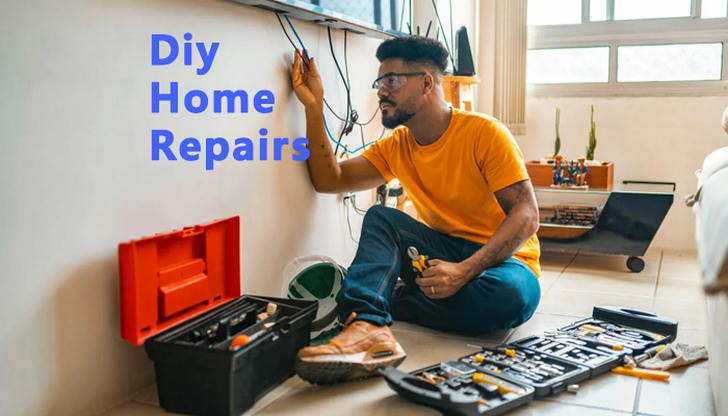
Owning a home is a rewarding experience, but it also requires ongoing maintenance and occasional repairs. Many homeowners can handle basic repairs on their own, saving both time and money. However, not all repairs are suitable for DIY enthusiasts—some are best left to the professionals. This article provides practical advice on common DIY home repairs, alongside guidelines on when to call in an expert. We’ll also include reliable insights to help ensure safety and efficiency.
1. Basic Plumbing Repairs
A. Fixing a Leaky Faucet
A leaky faucet is one of the most common plumbing issues homeowners encounter. According to the U.S. Environmental Protection Agency (EPA), a single leaky faucet can waste over 3,000 gallons of water annually. Thankfully, this is an easy fix for most people.
Steps:
Turn off the water supply to the faucet.
Use a wrench to remove the handle and other parts.
Inspect the rubber washer or cartridge for damage. Replacing these is usually enough to stop the leak.
Reassemble the faucet and check for leaks by turning the water back on.
When to Call a Plumber:
If the leak persists after replacing the washer or cartridge, or if you can't identify the source of the leak, it's best to call a professional plumber. Persistent plumbing issues may indicate more significant problems in the plumbing system.
B. Unclogging a Drain
Clogged drains are a common household issue. The American Cleaning Institute estimates that clogged drains cause millions of dollars in plumbing repairs annually. Fortunately, most clogs are manageable.
Steps:
Use a plunger to try and dislodge the clog. Ensure the plunger is sealed over the drain and create suction by pumping it multiple times.
If that doesn't work, use a drain snake to break up the clog.
For minor clogs, a mix of baking soda and vinegar, followed by hot water, can help break down the buildup.
When to Call a Plumber:
If clogs persist, recur frequently, or if you suspect deep blockages in the plumbing system, a professional plumber should be called. They can ensure that your pipes are clear and in good condition.
2. Electrical Fixes
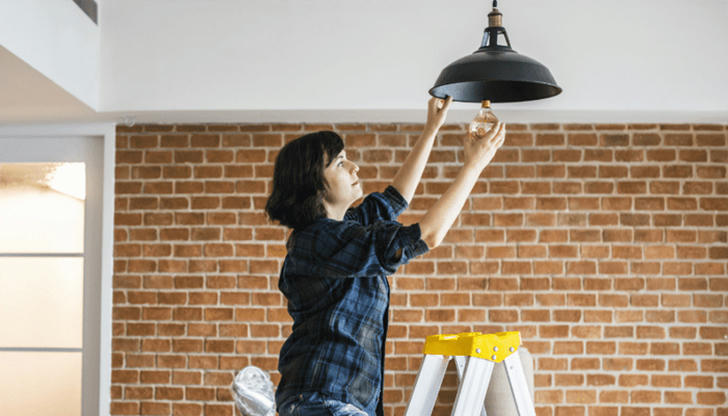
A. Replacing a Light Switch or Outlet
Replacing a faulty light switch or outlet is a fairly simple task for many homeowners, though safety should always come first.
Steps:
Turn off the power at the circuit breaker to avoid electrical shock .
Remove the switch or outlet cover plate and unscrew the device from the wall.
Disconnect the old device and attach the new one, ensuring the wiring is secure.
Secure the device back into the wall and replace the cover plate.
When to Call an Electrician: If you notice electrical sparking, smell burning, or if you are unsure of how to handle the wiring, it’s best to call a licensed electrician. Electrical work can be dangerous if improperly handled.
B. Fixing a Tripped Circuit Breaker
A tripped circuit breaker is usually a quick fix, but frequent trips can be indicative of underlying issues.
Steps:
Go to your breaker panel and locate the tripped breaker (it will be in the “off” position).
Flip the breaker back to the “on” position.
If the breaker trips again, there might be a more serious issue, such as an overloaded circuit or faulty wiring.
When to Call an Electrician:
If the breaker continues to trip, or if you are unsure about the cause, it's wise to call an electrician. Frequent tripping can signal deeper electrical issues that could pose a fire risk.
3. Minor Wall Repairs
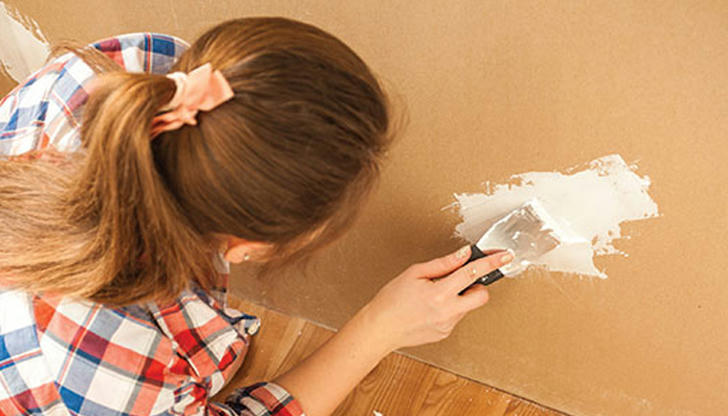
A. Patching Small Holes and Cracks
Minor wall cracks and holes are often inevitable, especially in homes with settling foundations. Fortunately, these can be patched easily.
Steps:
Clean the area around the hole or crack.
For small holes, apply spackle or joint compound using a putty knife. For larger holes, use a patching material first.
Once dry, sand the area to make it smooth.
Paint over the repair to match the surrounding wall.
When to Call a Pro:
If the hole is large (over 6 inches) or the damage is structural (e.g., cracks due to foundation problems), you should call a professional contractor. Structural damage could require foundation repairs or reinforcement.
B. Fixing Loose Tiles
Tiles that are loose or cracked can cause further damage if not fixed promptly.
Steps:
Pry the loose tile off the surface gently.
Clean the area thoroughly before applying new tile adhesive.
Press the tile back into place and allow the adhesive to set.
Re-grout the tiles once the adhesive has dried.
When to Call a Pro:
If water damage is evident underneath the tiles, or if the tile problem is part of a larger installation (e.g., a bathroom floor), it may be time to call a professional contractor to ensure proper waterproofing and installation.
4. HVAC System Maintenance

A. Changing Air Filters
According to the U.S. Department of Energy, replacing a clogged air filter can lower your HVAC system's energy consumption by 5–15%. Changing the filter is an easy way to keep your system running efficiently.
Steps:
Turn off your HVAC system.
Locate and remove the air filter.
Replace it with a new filter of the correct size.
Turn the system back on and check airflow.
When to Call a Pro:
If your system doesn’t improve despite changing the filter, or if there are issues with airflow or temperature regulation, it’s a good idea to call a professional HVAC technician.
B. Cleaning Vents and Ducts
Cleaning your air vents and ducts can improve air quality and system efficiency. The U.S. Environmental Protection Agency (EPA) recommends cleaning your ducts every 3-5 years, depending on usage.
Steps:
Remove the vent covers and use a vacuum with a long hose attachment to clean the ducts.
Wipe down the vent covers and surrounding area with a damp cloth.
If you see signs of mold or mildew, it may be time for a professional deep cleaning.
When to Call a Pro:
If you suspect a build-up of dust, mold, or allergens in the ducts, or if your system shows signs of significant wear, it's best to call an HVAC professional. They can conduct a thorough inspection and deep cleaning of the ducts.
5. Exterior Repairs
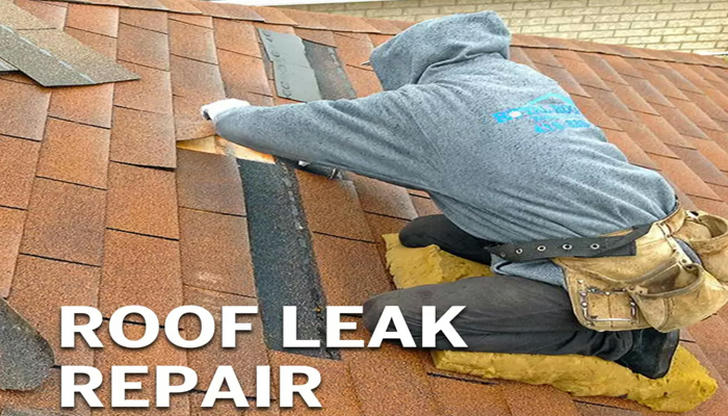
A. Fixing a Leaky Roof
Roof leaks should be addressed quickly to prevent water damage to your home. While some minor leaks can be fixed with a DIY approach, significant leaks may require professional help.
Steps:
- Identify the source of the leak and ensure the area is dry.
- Apply roofing sealant or patching material to the leak.
- Allow the patch to dry thoroughly.
When to Call a Pro:
If the leak is large or you’re unable to locate the source, it's best to call a roofing professional. A full roof replacement or major repairs should only be performed by a licensed contractor.
B. Maintaining Gutters
Gutter cleaning is essential for preventing water damage to your foundation and roof. According to the National Roofing Contractors Association (NRCA), clogged gutters can lead to water pooling on the roof, which may cause damage over time.
Steps:
Use a ladder to access the gutters safely and remove debris.
Check the gutters for damage, such as cracks or sagging.
Flush the gutters with water to ensure proper drainage.
When to Call a Pro:
If your gutters are severely damaged or if they are difficult to access, it’s best to call a professional for repairs or replacement. A roofing contractor can ensure that the gutters are installed correctly and function efficiently.
6. Door and Window Repairs
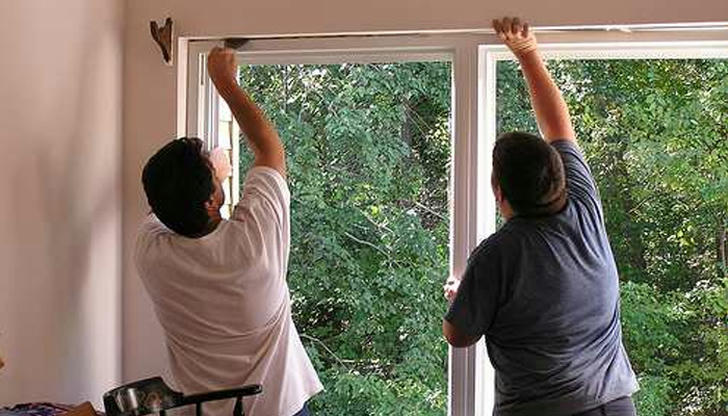
A. Fixing a Sticking Door
A sticking door can usually be fixed by adjusting the hinges or frame. This is a quick repair that can save you the cost of replacing the door.
Steps:
Check the door frame and hinges for alignment.
Tighten or adjust the screws on the hinges to realign the door.
If needed, sand the edges of the door slightly to allow it to close more smoothly.
When to Call a Pro:
If the door frame is warped, or if there is a structural issue causing the door to stick, it’s best to call a professional carpenter to ensure a proper repair.
B. Replacing Weatherstripping
Replacing old or damaged weatherstripping helps to prevent drafts, reducing your heating and cooling costs. According to the U.S. Department of Energy, proper weatherstripping can reduce energy costs by 10–20%.
Steps:
Remove the old weatherstripping from around the door or window.
Clean the surface before installing the new weatherstripping.
Measure, cut, and attach the new weatherstripping to ensure a tight seal.
When to Call a Pro:
If the door or window frame is damaged, or if you are unsure about measuring and fitting the weatherstripping, a professional can assist with proper installation.
7. Flooring Repairs
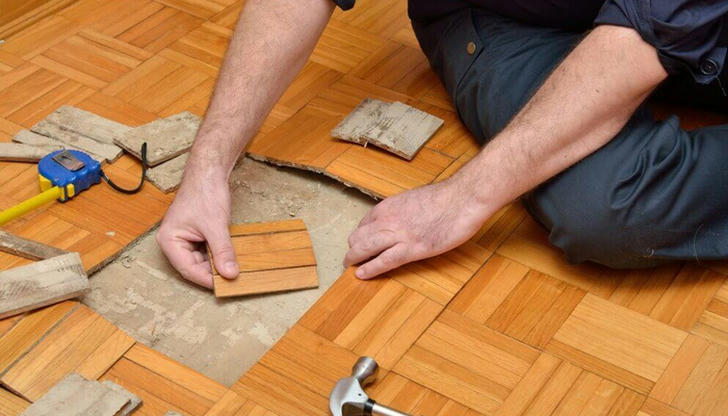
A. Fixing Scratches or Dents in Hardwood Floors
Hardwood floors can get scratched or dented over time. However, small scratches and dents can be repaired to restore the look of your floor.
Steps:
Fill scratches or dents with a wood filler that matches the floor’s color.
Sand the area smoothly and apply a finish to match the rest of the floor.
Buff the area to blend it in.
When to Call a Pro:
If the damage is extensive or if refinishing the entire floor is necessary, a professional will have the right tools and expertise to restore the wood properly.
B. Replacing Carpet Tiles or Patches
Carpet tiles or small sections of carpet can be replaced easily by homeowners, especially when the damage is localized.
Steps:
Cut out the damaged section of carpet and remove it.
Place a matching carpet tile or patch the area using adhesive.
Smooth the edges and ensure it adheres firmly.
When to Call a Pro:
If your carpet is extensively damaged or if you need a complete replacement, it's best to call a professional flooring installer. They can ensure that the new carpet fits and is installed correctly.
Conclusion
While DIY home repairs can be cost-effective and rewarding, it’s important to know when to call in a professional. Many common repairs can be tackled by homeowners with the right tools and knowledge, but safety and proper execution should always be your top priority. If in doubt, consulting a professional can save you time, money, and unnecessary stress. Always consult trusted sources and industry standards before embarking on major repairs.
